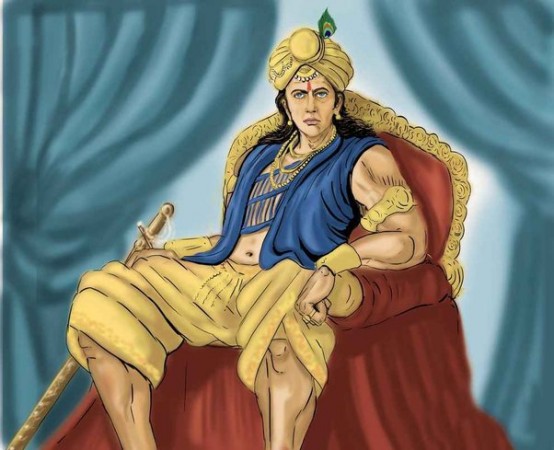
Samudragupta, also known as Chakravartin Samudragupta, was one of the greatest rulers of the Gupta Empire, which flourished in ancient India from approximately 320 CE to 550 CE. He was the son of Chandragupta I and the successor to the Gupta throne, reigning from around 335 CE to 380 CE. Samudragupta's reign marked a period of significant expansion and cultural achievement, earning him the title "Chakravartin," meaning "universal monarch."
Early Life and Ascension:
Samudragupta was born to Chandragupta I and Queen Kumaradevi, and he received an excellent education befitting a future emperor. His father had established the foundation of the Gupta Empire, and Samudragupta ascended to the throne after Chandragupta I's demise.
Military Conquests and Expansion:
One of the most remarkable aspects of Samudragupta's reign was his military prowess and ambitious conquests. He was an accomplished warrior and a brilliant strategist. Over the course of his rule, he conducted a series of military campaigns and expanded the Gupta Empire to its zenith. His empire stretched from the Himalayas in the north to the Narmada River in the south, and from the Brahmaputra River in the east to the Yamuna River in the west.
Allahabad Pillar Inscription:
The achievements of Samudragupta's reign are extensively documented in the Allahabad Pillar Inscription, also known as the Prayagraj Prashasti. This inscription, composed in classical Sanskrit, was carved on a pillar at Allahabad (present-day Prayagraj) by his court poet and minister, Harisena. The inscription provides valuable insights into the military conquests, administrative abilities, and cultural patronage of Samudragupta.
Policy of Conquest and Dharma:
Samudragupta was not a mere conqueror; he was known for his policy of "Dharma." While he expanded his empire through military campaigns, he also followed a policy of righteous governance, respecting the traditions and beliefs of the conquered kingdoms. He displayed a sense of tolerance and assimilation, which contributed to the stability and harmony within the empire.
Patronage of Arts and Culture:
Samudragupta was not only a skilled ruler and warrior but also a great patron of arts and culture. The Gupta Empire witnessed significant advancements in literature, art, and philosophy during his reign. He extended his patronage to scholars, poets, and artists, contributing to a vibrant cultural environment.
Performances of the Ashwamedha Sacrifice:
Samudragupta performed the Ashwamedha Sacrifice, an ancient Vedic ritual symbolizing the assertion of imperial authority. This ritual further solidified his status as a Chakravartin or universal monarch.
Succession:
After a successful and eventful reign, Samudragupta was succeeded by his son, Chandragupta II, also known as Chandragupta Vikramaditya. Chandragupta II continued the Gupta legacy and further expanded the empire during his rule.
Legacy:
Samudragupta's reign is considered a golden age in Indian history. He laid the foundation for the Gupta Empire's prominence and set a precedent for subsequent Gupta rulers. His military achievements, administrative acumen, and patronage of arts and culture left an indelible mark on India's history.
Conclusion:
Samudragupta, the second ruler of the Gupta Empire, was an exceptional leader who transformed the Gupta dynasty into one of the most influential and powerful empires in ancient India. His military conquests, commitment to Dharma, and patronage of arts and culture continue to be celebrated as significant contributions to India's cultural and historical heritage. Samudragupta's legacy as a Chakravartin and a ruler of remarkable achievements endures through the annals of Indian history.
The versatile actor who left his mark on Indian cinema is Zakariya Khan (Jayant)
Five popular Momos that are popular in India
The Adventure of a Legendary Actor and Theater Master, Utpal Dutt